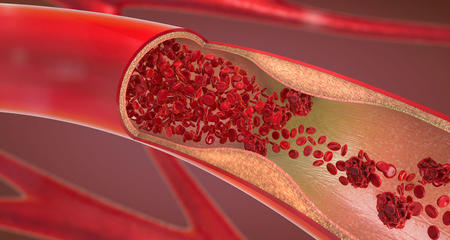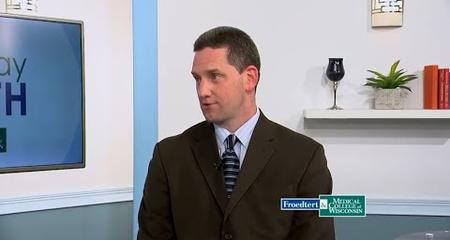Because symptoms may be mild or absent, peripheral artery disease (PAD), is often diagnosed only after it has progressed and symptoms are present. Untreated, PAD, also known as peripheral vascular disease (PVD), can lead to serious complications, several of which are life- and limb-threatening. Our physicians offer the complete range of treatment options for PAD and other serious vascular disease conditions.
Symptoms
Symptoms depend on which arteries are affected and to what extent blood flow is restricted. Some of the most common symptoms of PAD include:
Intermittent claudication: Pain, cramping and discomfort in the buttocks, thighs and legs when walking, which goes away after rest. Leg pain when walking should not be ignored.
Critical limb-threatening ischemia (CLTI): A serious blockage of the arteries that severely limits blood flow to the arms or legs. It can cause pain while sleeping or at rest, and can lead to open sores or wounds on the toes, feet or legs that don’t heal or heal very slowly. Left untreated, this condition can lead to amputation of the affected limb.
Do you have PAD?
- Do you walk less because of “muscle aches” in your legs?
- Do you have a sore, wounds or ulcers on your legs or feet that heal slowly or not at all?
- Do you have pain weakness, numbness or cramping in your leg muscles?
- Do your feet or legs have a blue or pale color or are cool compared to your other limbs?
- Does the hair on your legs and nails on your feet grow slowly?
Answering “yes” to any of these questions could be a sign of PAD. Ask your doctor about being tested for PAD.
Risk Factor Management for PAD
Some risk factors for PAD, such as aging and family history, cannot be controlled. Other factors greatly increase the risk of developing PAD. Modifying these risk factors can help slow or halt the progression of the disease:
- Cigarette smoking
- Diabetes
- High cholesterol
- High blood pressure
- Heart disease
- History of stroke
- Obesity
- Lack of exercise
If you think you may have PAD or other vascular disease, contact our Vascular Second Opinion Program. Most physicians encourage their patients to seek a second opinion about any major health issue. Our physicians have built outstanding relationships with area physicians and will work with you and your physician to determine the best treatment options for you.
Virtual Visits Are Available
Safe and convenient virtual visits by video let you get the care you need via a mobile device, tablet or computer wherever you are. We'll assess your condition and develop a treatment plan right away. To schedule a virtual visit, call 414-777-7700.


